
Some dogs whine, cry, or bark when you leave them home alone, while others turn destructive and take it out on your soft furnishings. Some drool, others pace, but whatever the manifestation of their distress, breeds with separation anxiety need careful consideration and management.
Good training, socialization, and providing mental and physical stimulation can help prevent or reduce separation anxiety in dogs. Additionally, individual temperament, early experiences, and the owner’s lifestyle play significant roles in a dog’s behavior.
For example, being born as the only puppy in a litter can cause issues when the dog is removed from its mother if there are no other dogs in its new home. If a traumatic event such as a thunderstorm happens when the owner is absent, this can cause separation anxiety as the dog associates being alone, with no one to reassure them, with terrifying events. And some dogs simply never settle in the unfamiliar environment of boarding kennels.
As separation anxiety and general neediness are often related to nurture rather than nature, it’s tricky pinning down in which precise breeds it’s most prevalent. Individual dogs within a breed may vary widely in their need for attention and companionship. However, some breeds and cross-breeds are generally known for being more social and affectionate dogs, often seeking close bonds with their owners. These may be associated with a higher likelihood of experiencing separation anxiety, as they look to their human for reassurance – so when that person is absent, this gives rise to anxiety.
Likewise, some dogs with very high energy demands may be easily bored or frustrated by being left home alone.
Let’s take a look at some breeds that may be more prone to separation anxiety – remembering that each individual dog and its life experiences should be taken case by case. It’s worth saying that no adult dog should be left alone regularly for long periods (more than four hours) – and puppies much less. But if they are nervous and stressed about you leaving the house for short errands, this is a sign of a more serious problem for the wellbeing and health of your pet, your relationship with neighbors, the state of your home and overall stress levels.
32 dog breeds most likely to have separation anxiety
1. Cockapoo
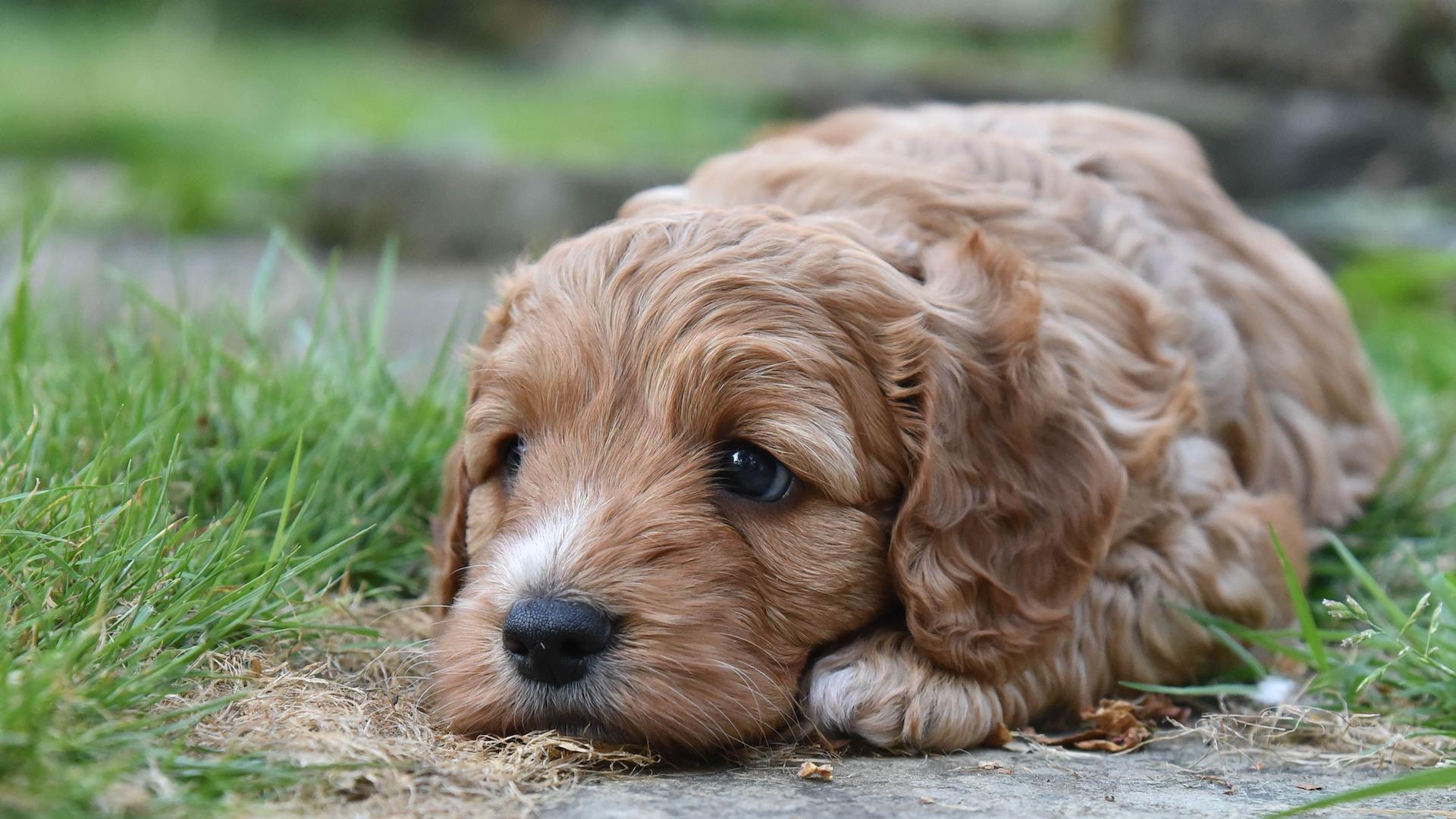
Often considered a “clingy” dog, the Cockapoo is nevertheless an exceptionally popular cross-breed. They have many great values, such as a low-shedding coat, intelligence and are full of love and energy. However as a very sociable, friendly dog, they tend to like having someone around. Couple that with their high intelligence, which leads to frustration if they are not occupied, and it’s easy to see why they might be prone to whining when alone.
2. Golden retriever
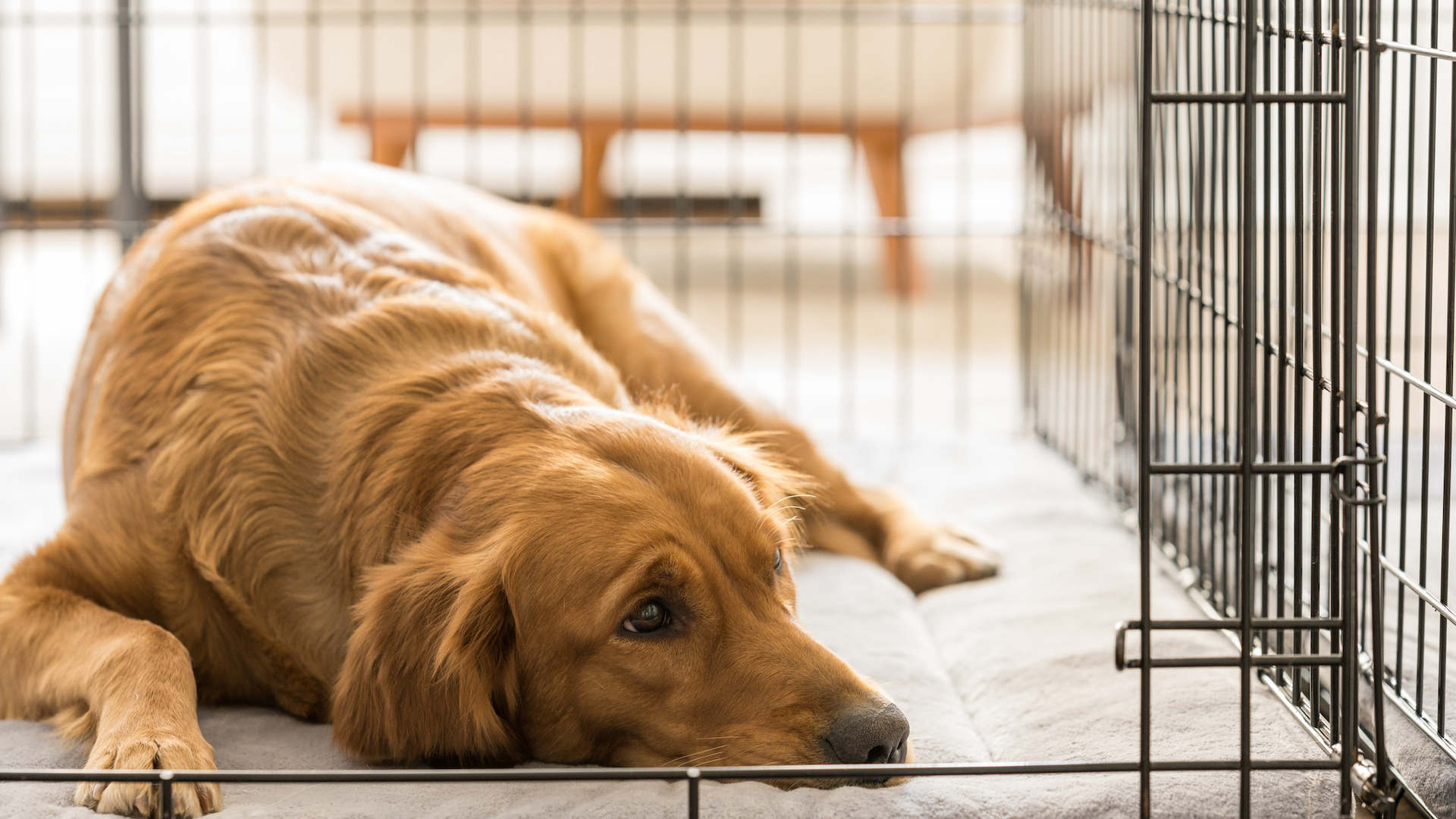
This extremely popular breed is naturally affectionate and loyal and forms strong bonds with its owner. This means that some Golden Retrievers can struggle if they are left alone for long periods as they are wondering where their “other half” has gone.
3. Cavalier King Charles Spaniel

Bred to be a companion dog and spend most of its time with humans means that Cavvies typically don’t react well to being left alone for long periods. The Cavalier King Charles is also one of the more naturally anxious breeds, so can be prone to barking and other nervous habits.
4. Cocker Spaniel

There are so many things to love about Cocker Spaniels, but this devoted family pet is known to be prone to separation anxiety if left alone. Because they are naturally such a friendly, rewarding dog in response to people’s attention, they seem to feel aggrieved when they don’t get enough of it.
5. Bichon Frise
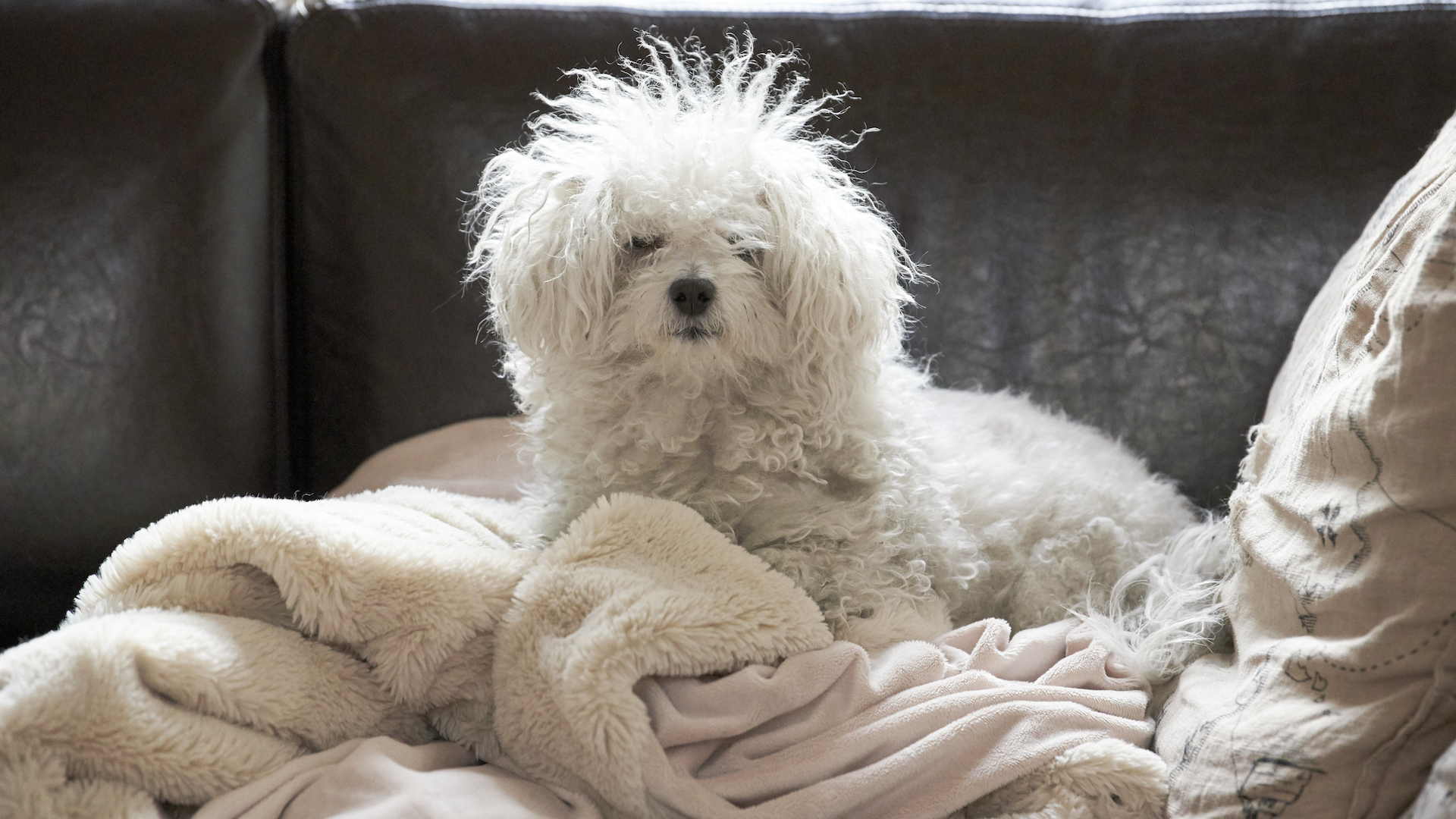
Bred to be a companion dog, the Bichon Frise thrives when they are with humans, as intended in their breeding. They can quickly become bored and suffer separation anxiety if left to fend for themselves for too long.
6. Dalmatian
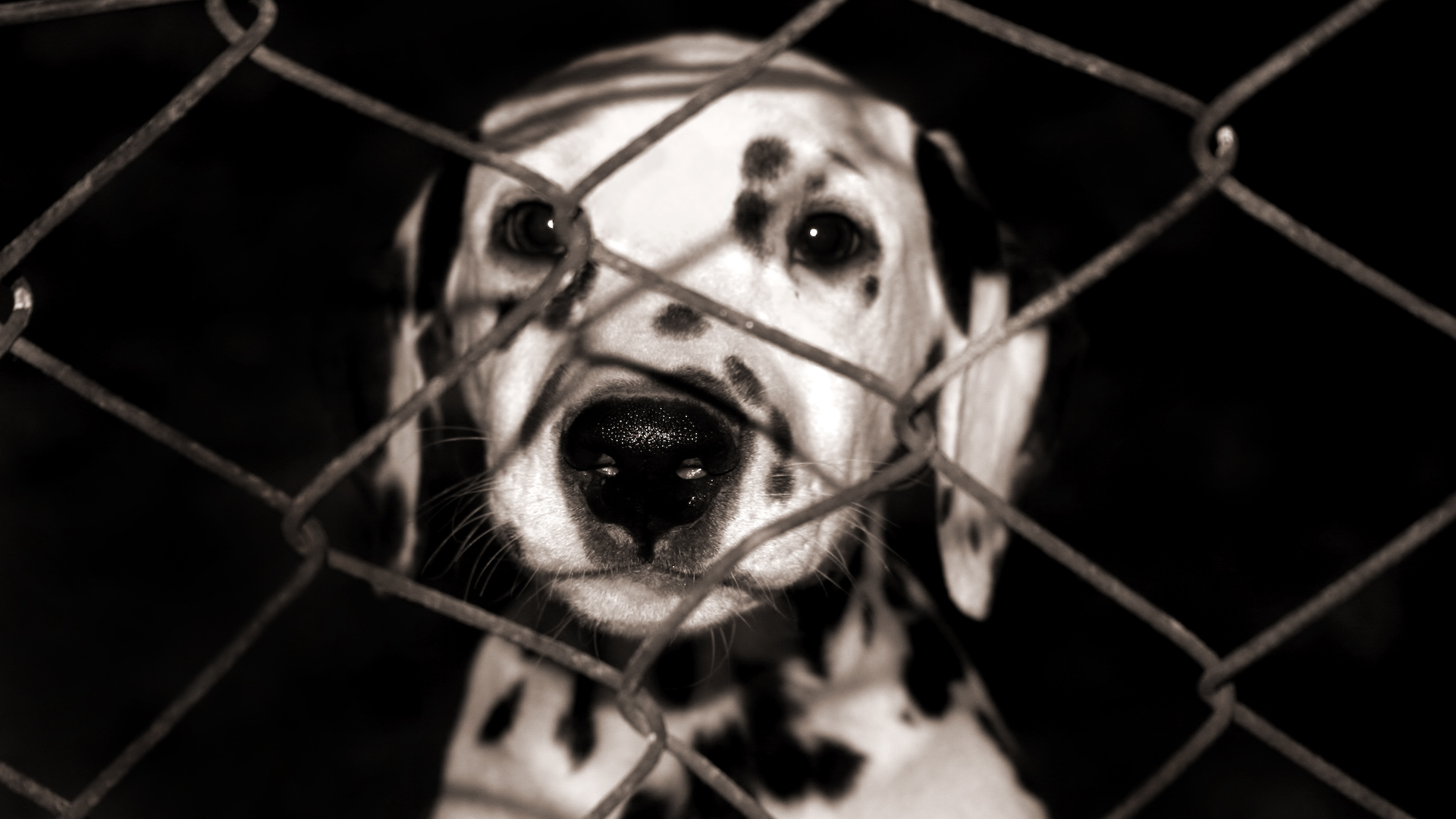
This spotted breed may be strong and delightful in company, but Dalmatians typically hate being left alone. They are very people-oriented and want you by their side. When you’ve gone, they find this a stressful experience. They may resort to destruction or even try to escape to find you (and as they are a big dog that can jump high, make sure your fences are more than adequate).
7. Dachshund

Dachshunds are not a particularly anxious breed, but they tend to resort to their big-dog bark when they are anxious about being left alone. This is particularly the case in those who have become over-attached to their owners or had a lack of socialization.
8. Chihuahua
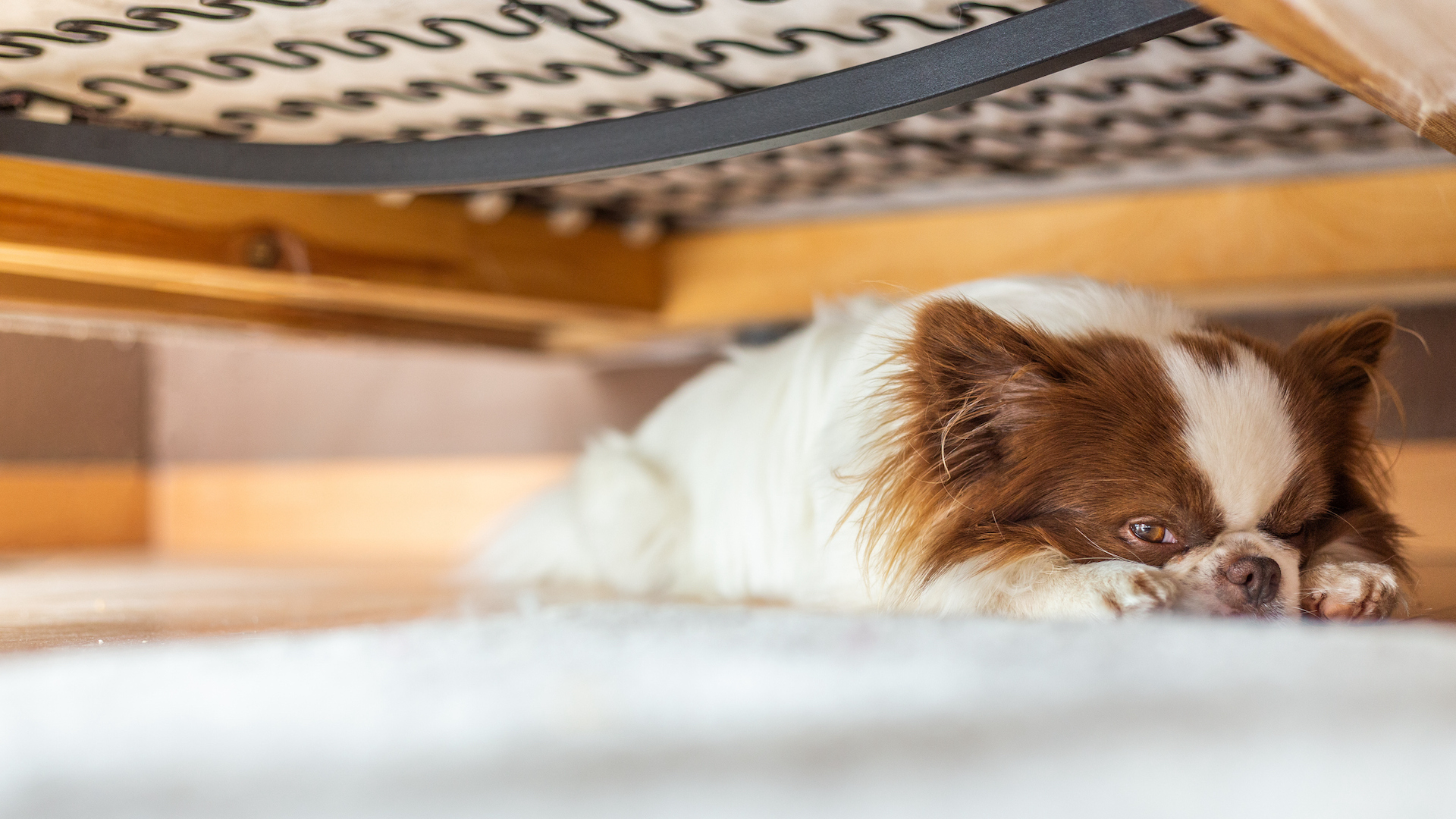
The tiny Chihuahua is an ideal breed for dog lovers living in an apartment, but not if they are going to be left alone as separation anxiety is common. They might be perfectly behaved when their human is around but tend to resort to howling, whining and destructive behaviour when they feel lonely.
9. Vizsla

Nicknamed the “velcro dog” because of their propensity to stick close to their owner, these beautiful hunting dogs were born and bred to hunt alongside people. Vizslas love to work and love to be with humans. Left alone, with nothing to do, often leads to anxiety.
10. Maltese
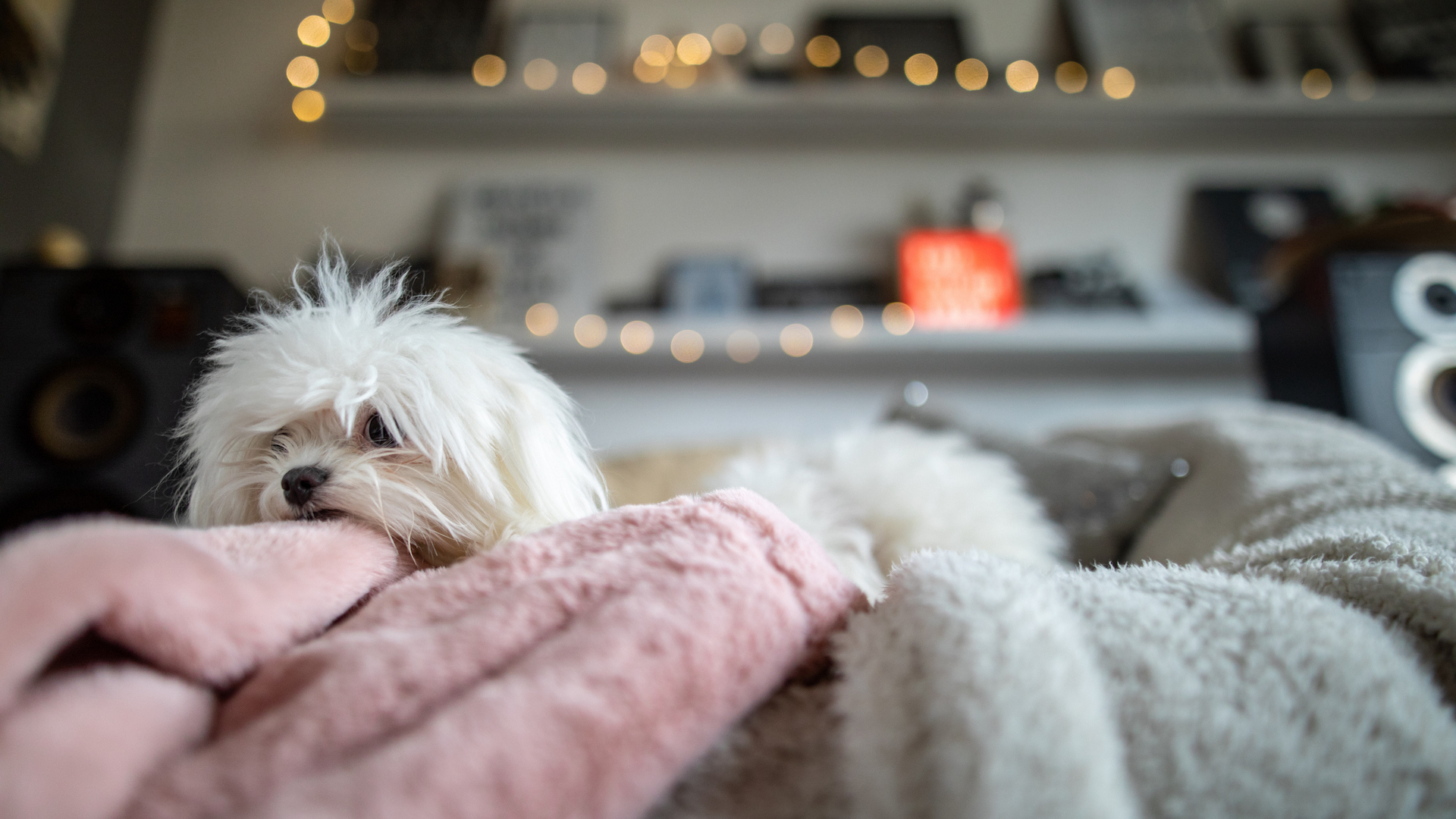
This loving family dog has been bred as a companion, and loves to be surrounded by people 24/7. Because they value attention and closeness to their humans, they can be anxious when left all alone, and let the neighbors know about their misery by whining the house down.
11. German Shepherd
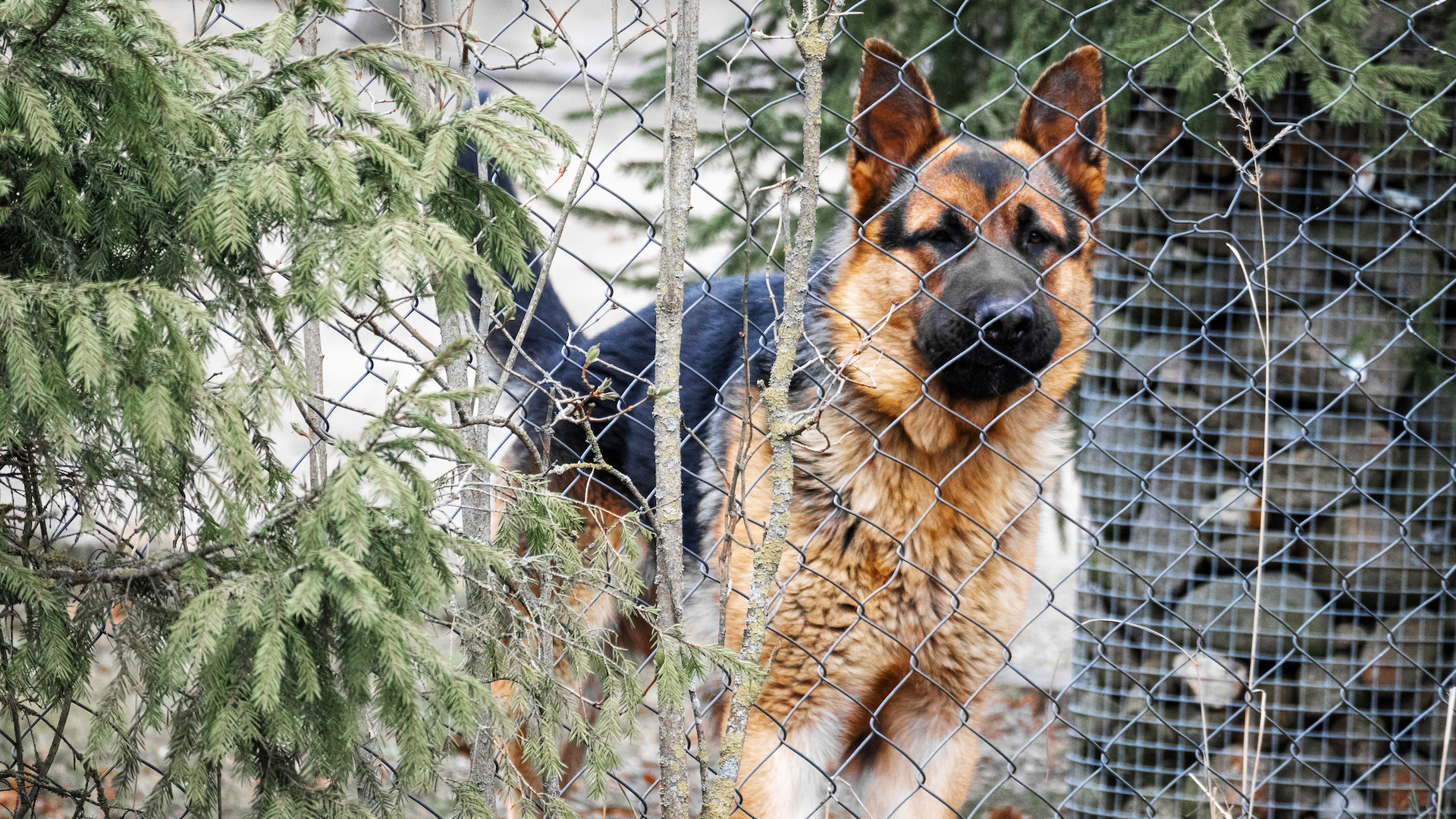
This noble and imposing breed is a softie inside. The German Shepherd dog needs a physically and mentally stimulating environment, and as a brilliantly trainable and intelligent working dog, they form strong bonds with their owners. However, this means they can be prone to distress if they are left alone, or not adequately exercised and stimulated.
12. Poodle
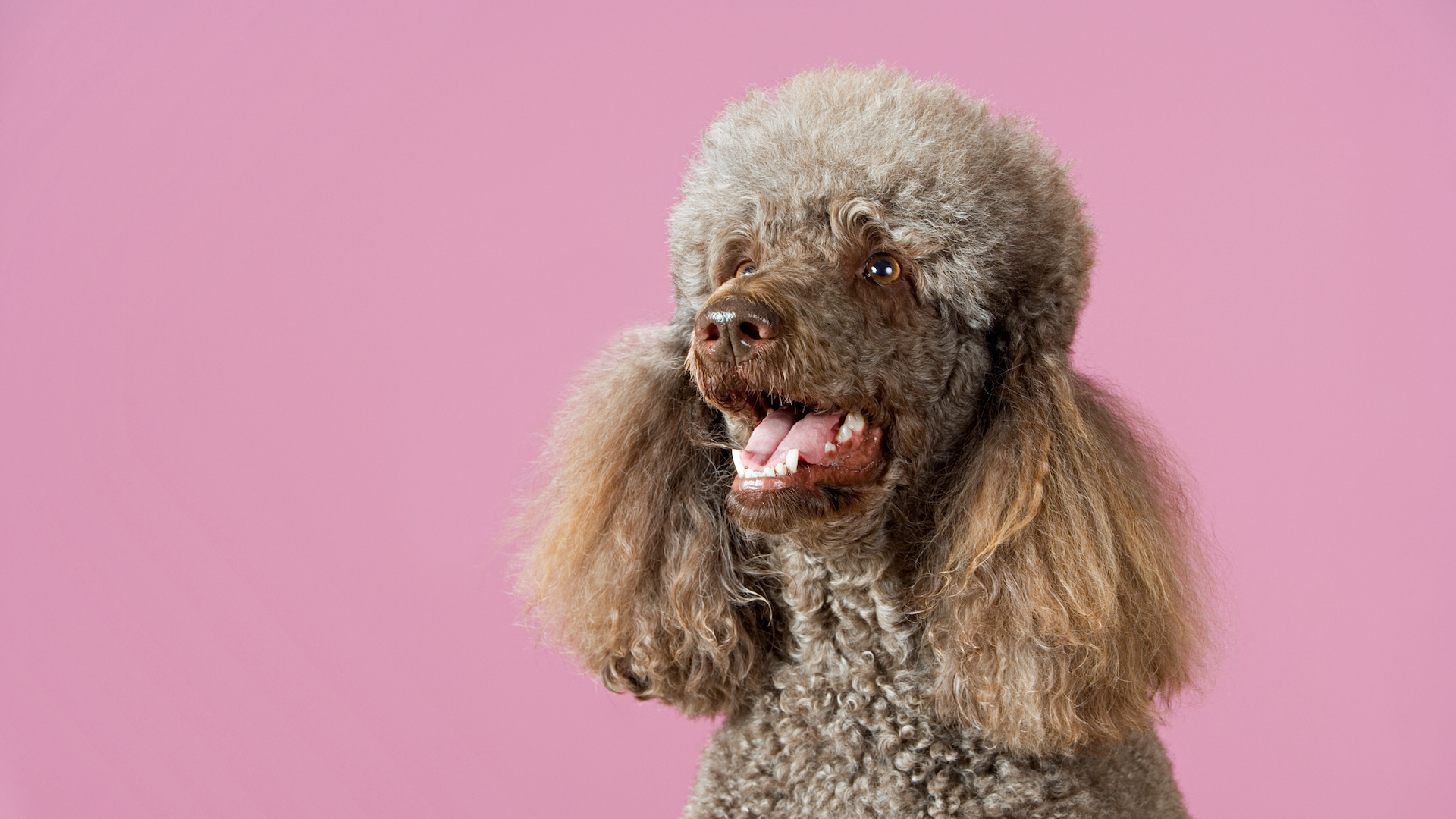
A highly intelligent breed, the Poodle is often said to be more keen on humans than other dogs. Blessed with a gentle temperament and bred to be a companion dog, they crave attention and human company. Plus, with their curly coat, they are used to spending plenty of time being groomed. When they don’t get that me-time, they can get quite distressed.
13. Border Collie

Big brains have their downsides. The Border Collie consistently ranks as the most intelligent dog, but this means they are more likely than other breeds to become bored when they have no stimulation. So leaving them alone can lead to separation anxiety and destructive behavior as they look for ways to amuse themselves.
14. Jack Russell Terrier
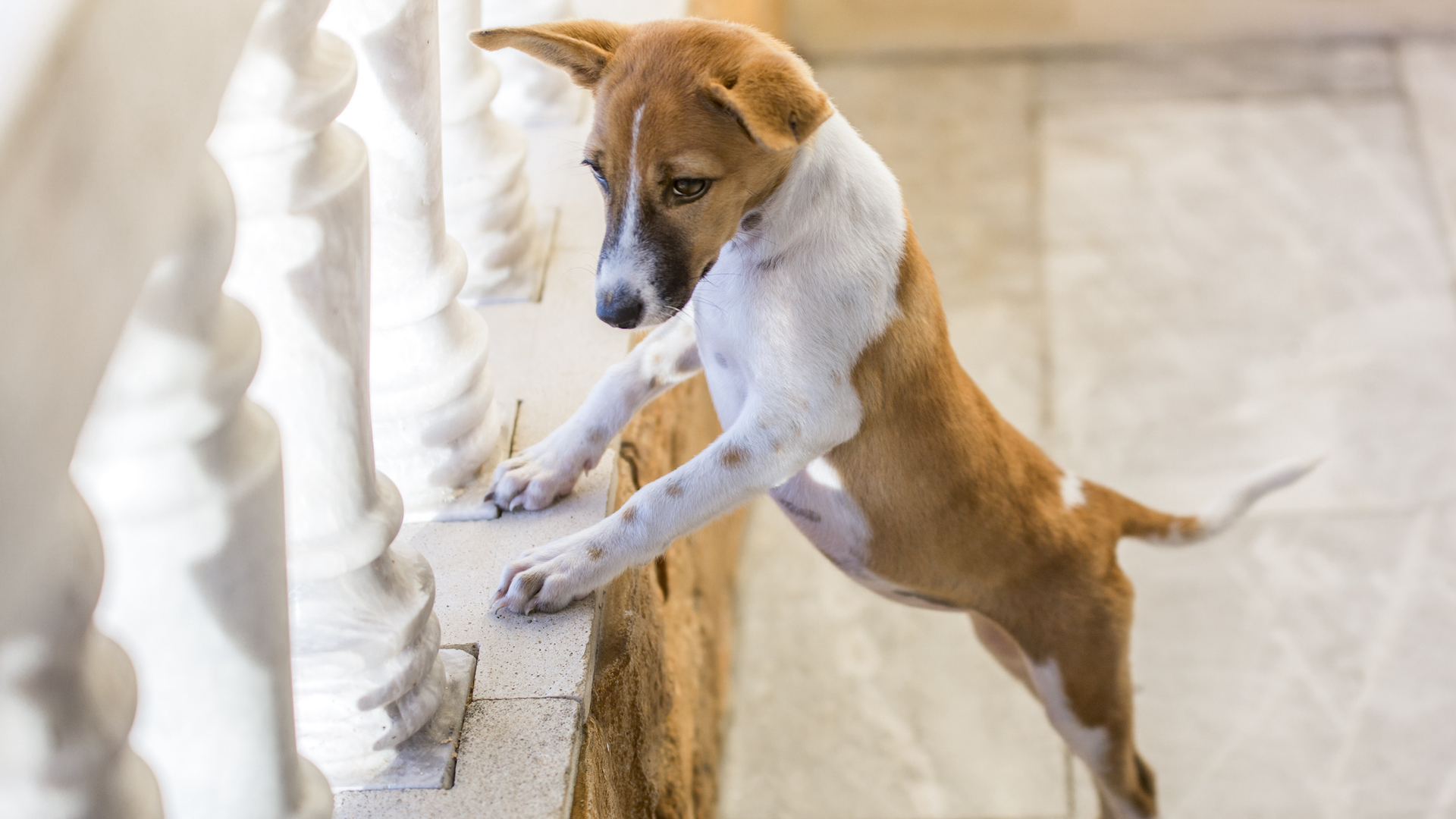
These feisty little terriers have high energy levels, and require masses of entertainment and plenty of exercise if they are not to get bored and start seeking their own forms of amusement. They need a human around to engage them and keep them out of mischief.
15. Boxer
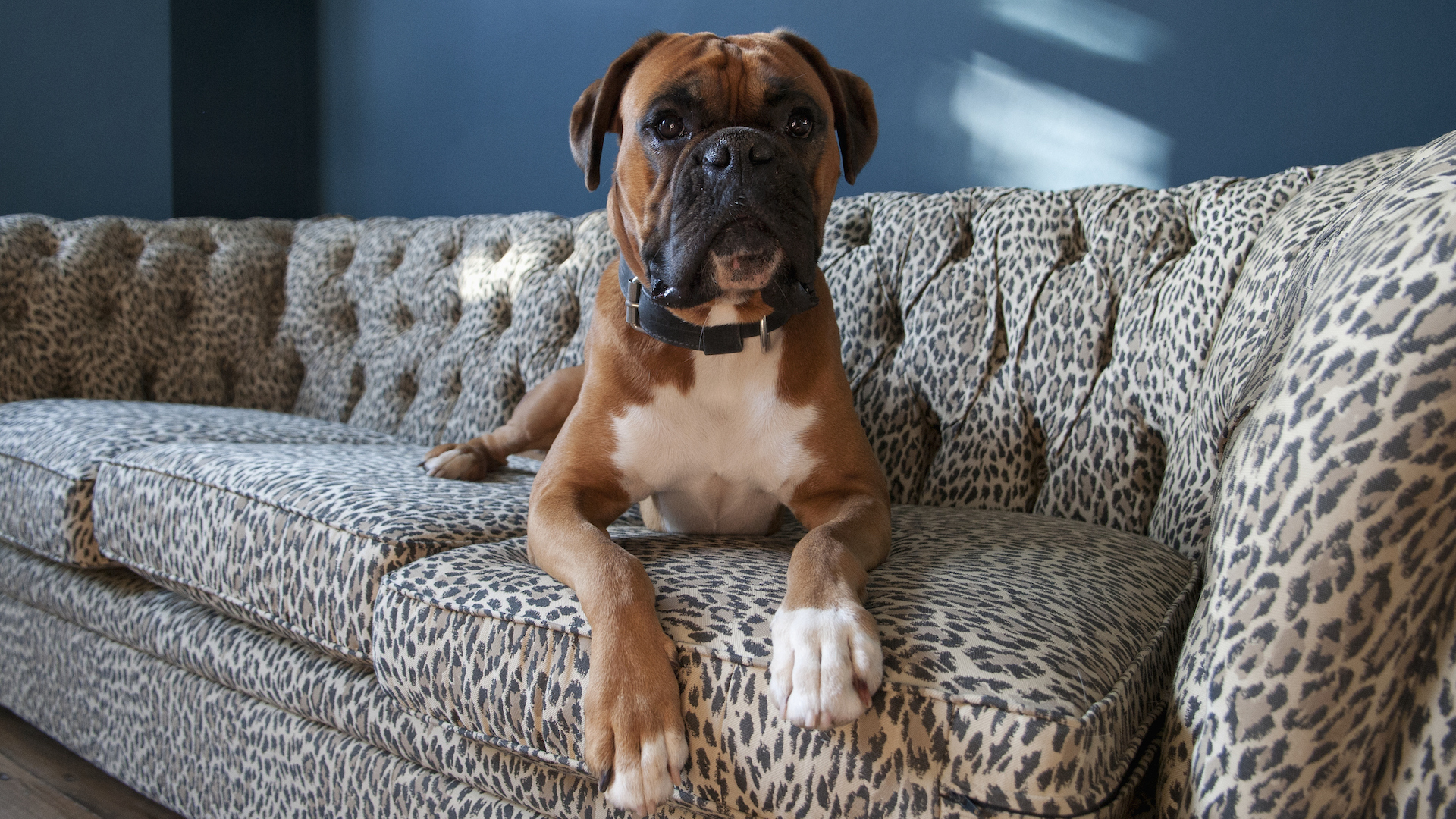
Boxers thrive on human company, so if they are alone or get bored, they can develop problematic habits such as chewing furniture and nuisance barking. This is a breed that is prone to claustrophobia, so make sure you give your Boxer plenty of space so that the don't feel confined. While on the flip side, not having so much room that he paces around the whole house looking for his humans.
16. Australian Shepherd
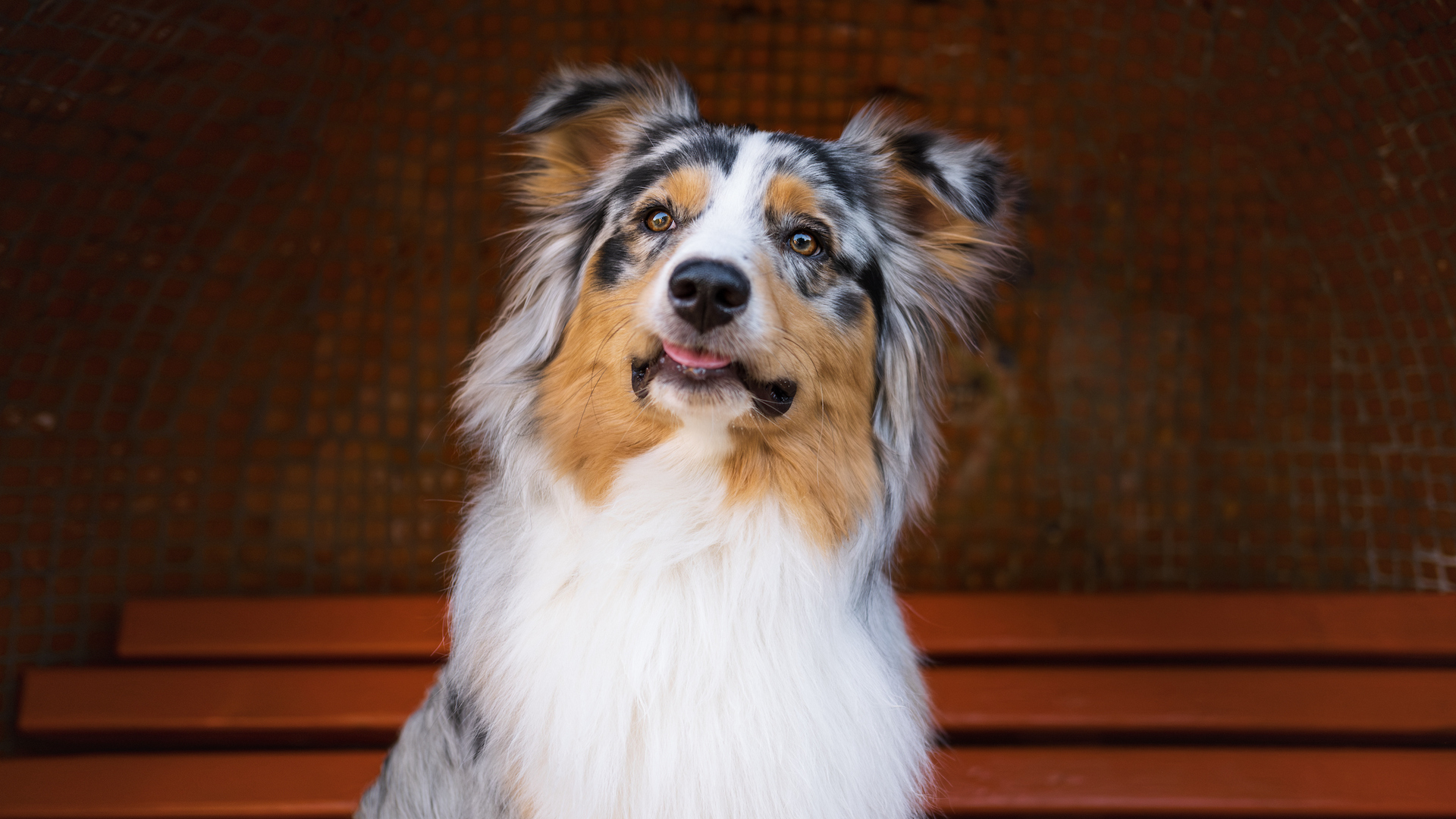
The Australian Shepherd Dog is very active breed that was created to work all day long under the hot Australian sun. If they’re not busy, they’re bored – which leads to problematic habits when left alone doing nothing.
17. Beagle
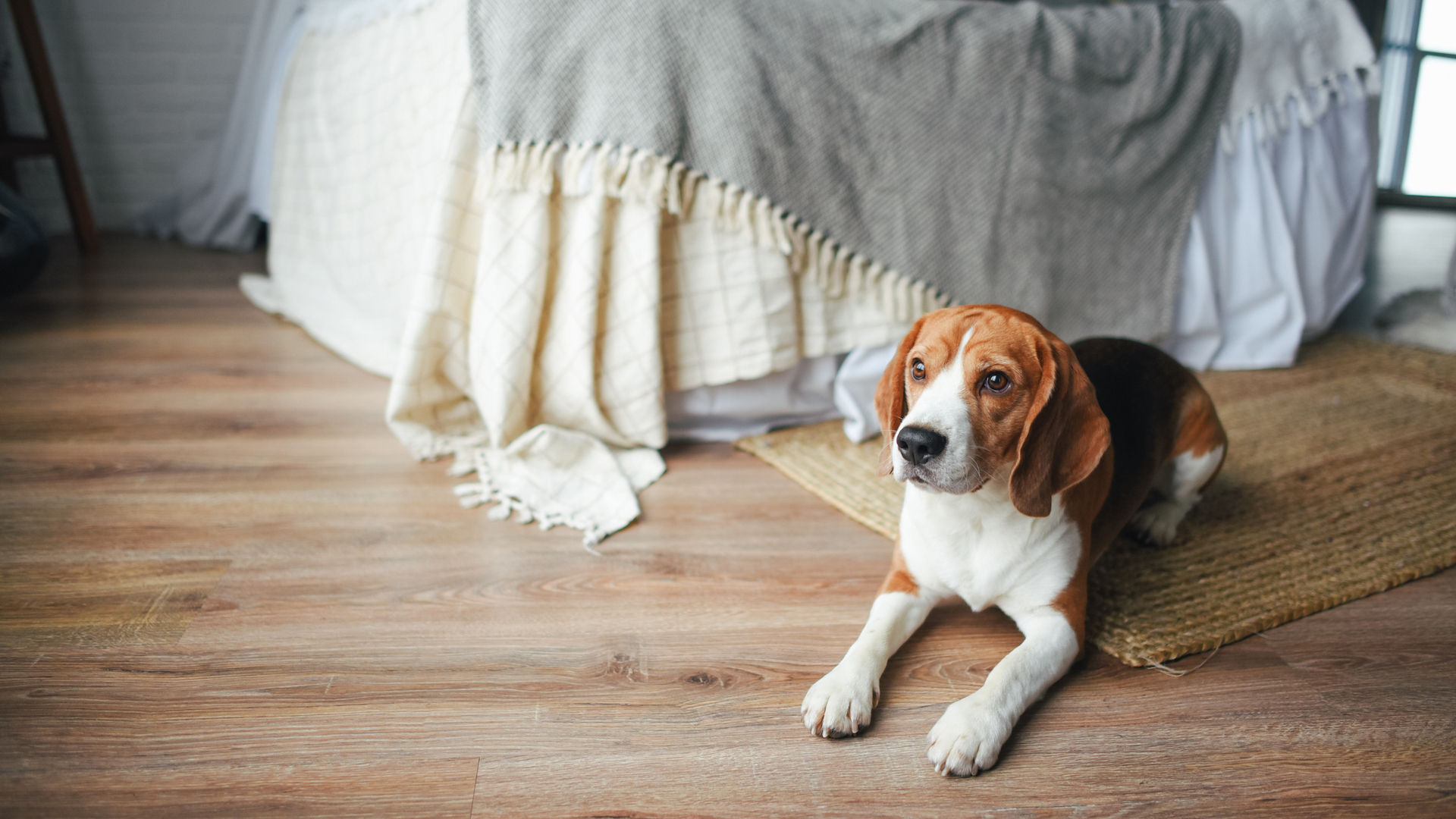
A hunting dog that makes a brilliant family pet. However, due to being bred as a pack dog who is superbly loyal to his human friends, the Beagle doesn’t always cope well with long periods of isolation and can feel stressed and respond with anxiety.
18. Pomeranian
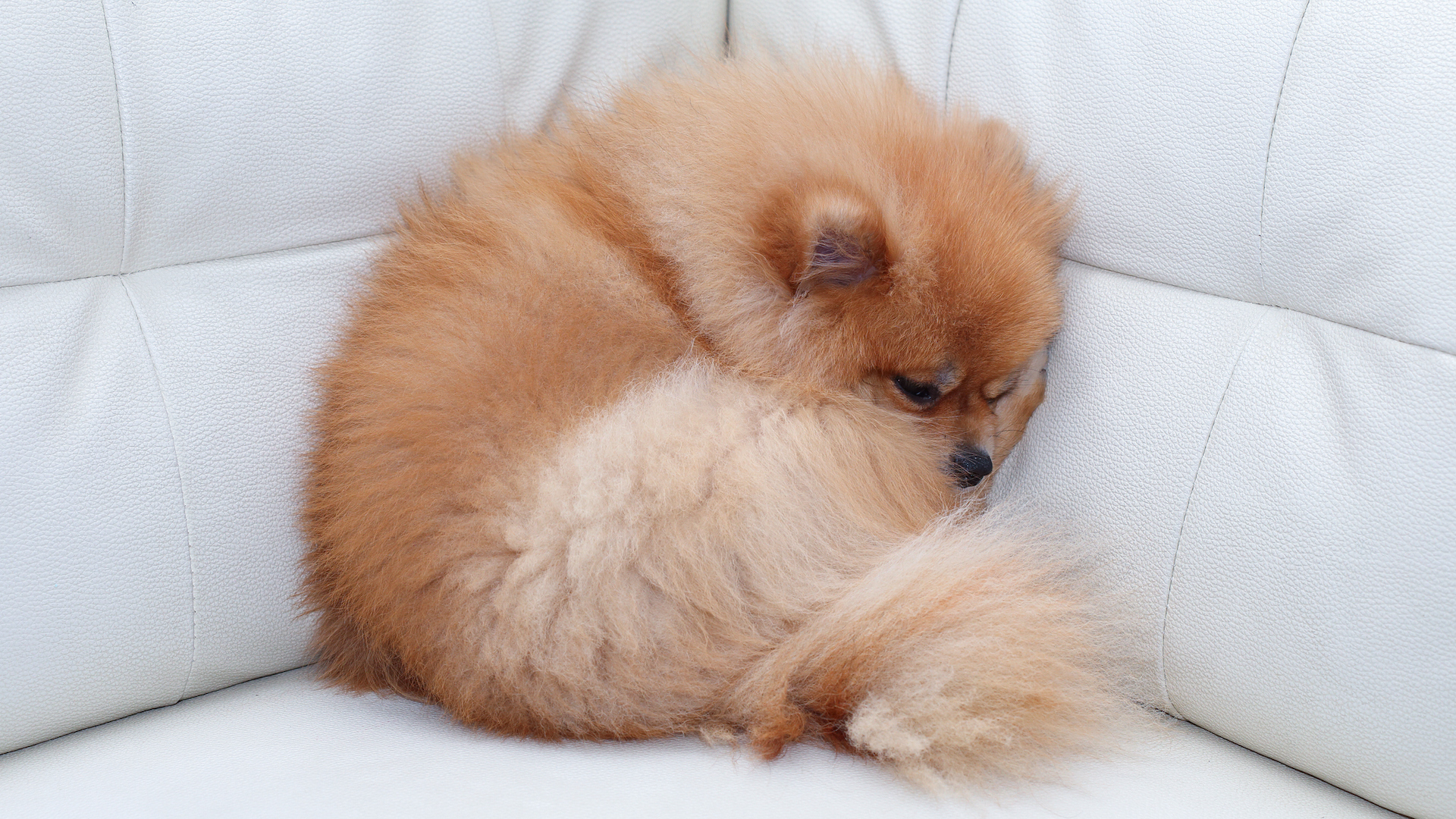
Pomeranians were bred to be companion dogs, which makes them more likely to suffer from separation anxiety than some other breeds, as they relish human company.
19. Shetland Sheepdog
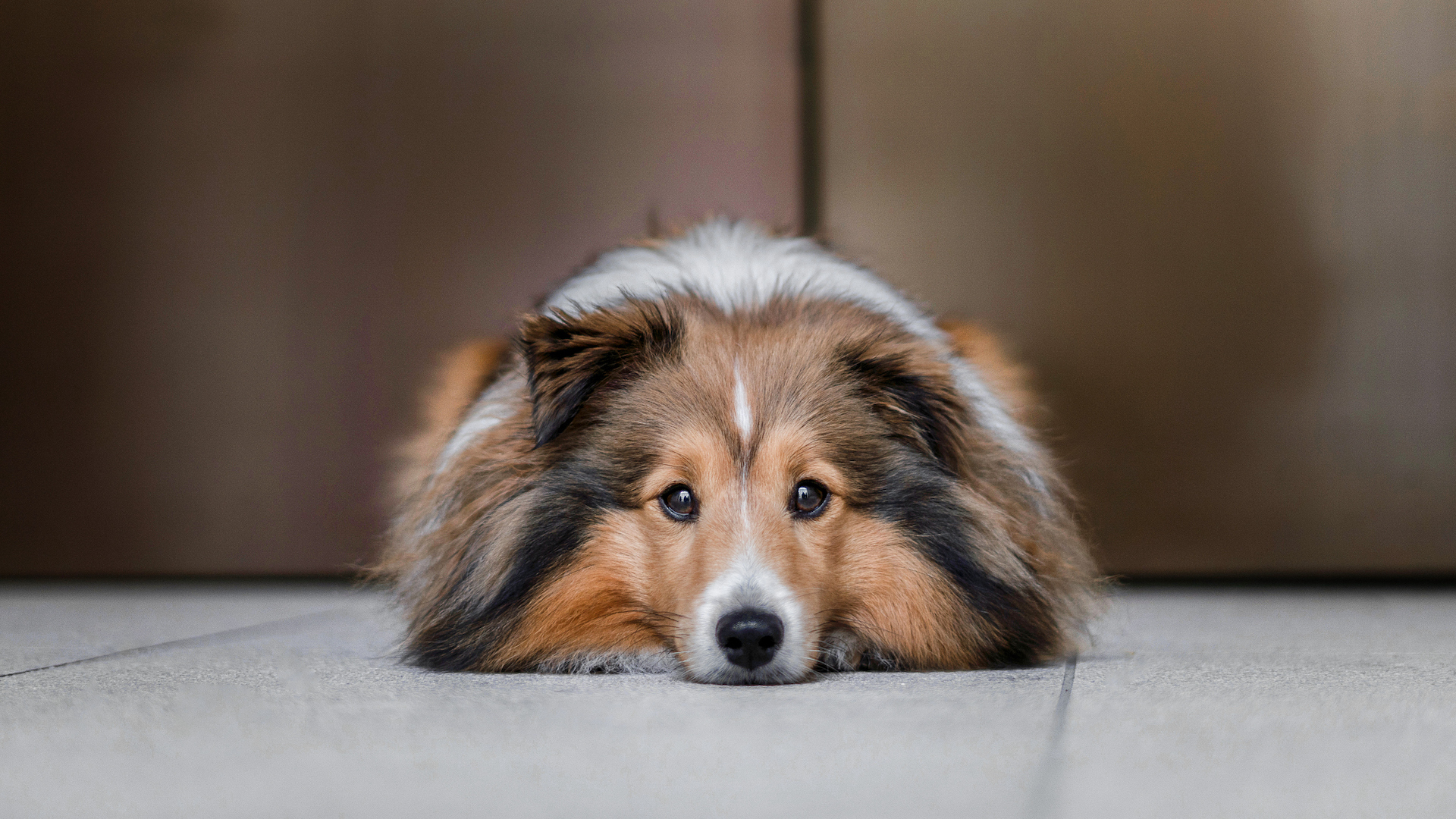
In common with many working breeds, Shetland Sheepdogs are highly social creatures and do not enjoy being left alone. Additionally, they require plenty of daily physical activity, so if they are frustrated and bored, this may trigger stress at being left to fend for themselves.
“Shelties” tend to form strong bonds with their owners, so strangers may also make them feel anxious, making it complicated for dog-walkers or neighbours to pop round to help out.
20. Great Dane
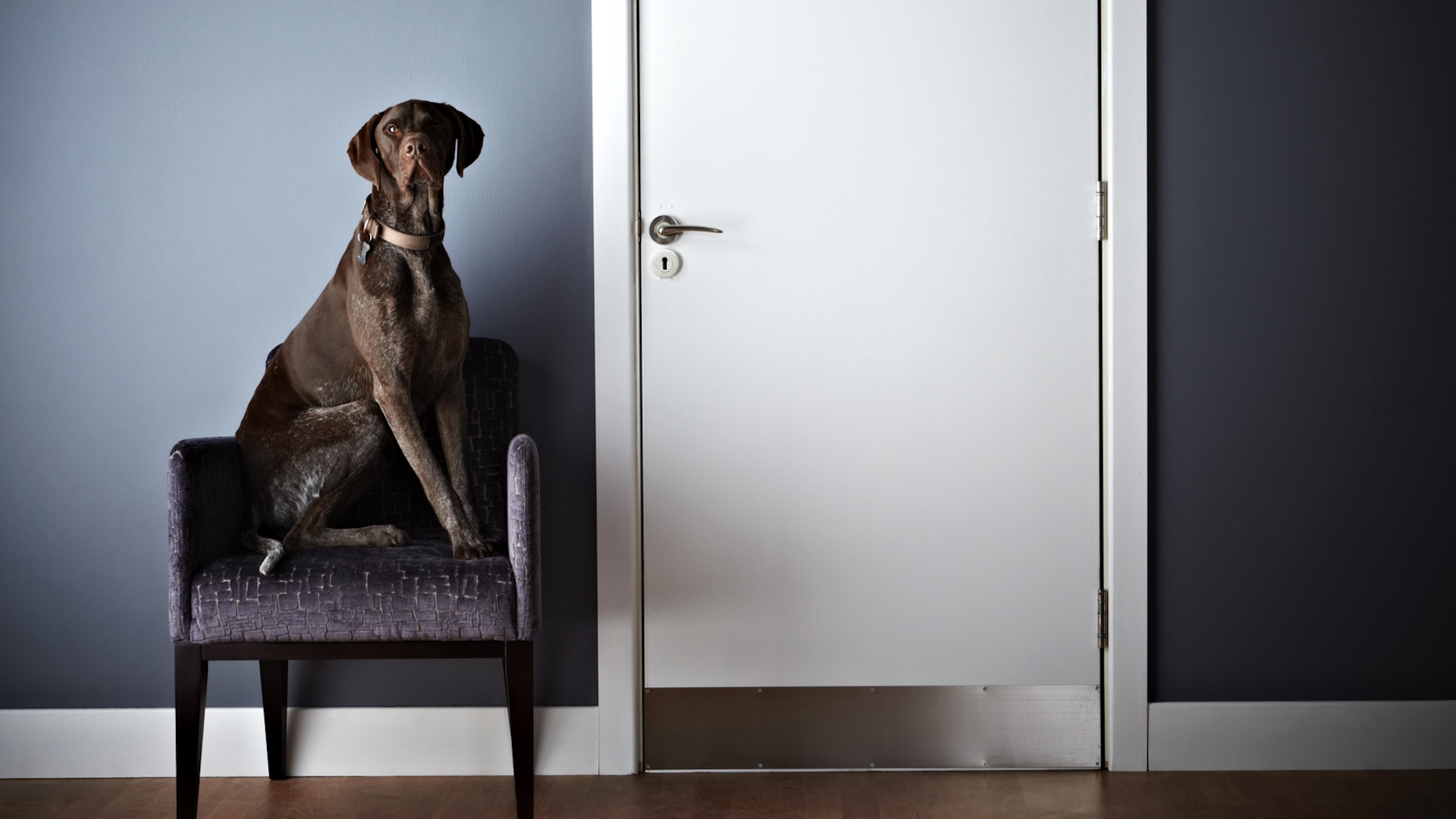
Great Danes were bred to be both loyal and loving, which leads them to form strong bonds with their owners. This means that when the owner is out, they feel nervous and agitated. What may be acceptable in a small breed can be very problematic with a large breed like the Great Dane, because of the amount of destruction they can do thanks to their size.
21. Boston Terrier

Boston Terriers may look like a super confident dog that can take on the world, but they’re just as likely to suffer from separation anxiety as other breeds intended to be companion dogs. Boston Terriers may be more likely to be inadvertently nurtured to struggle with loneliness as they are an ideal apartment dog, which means they are more likely to have just one owner, and no other dogs for company. A risk factor for developing separation anxiety is living in a home with a single human and no other animals.
22. Havanese
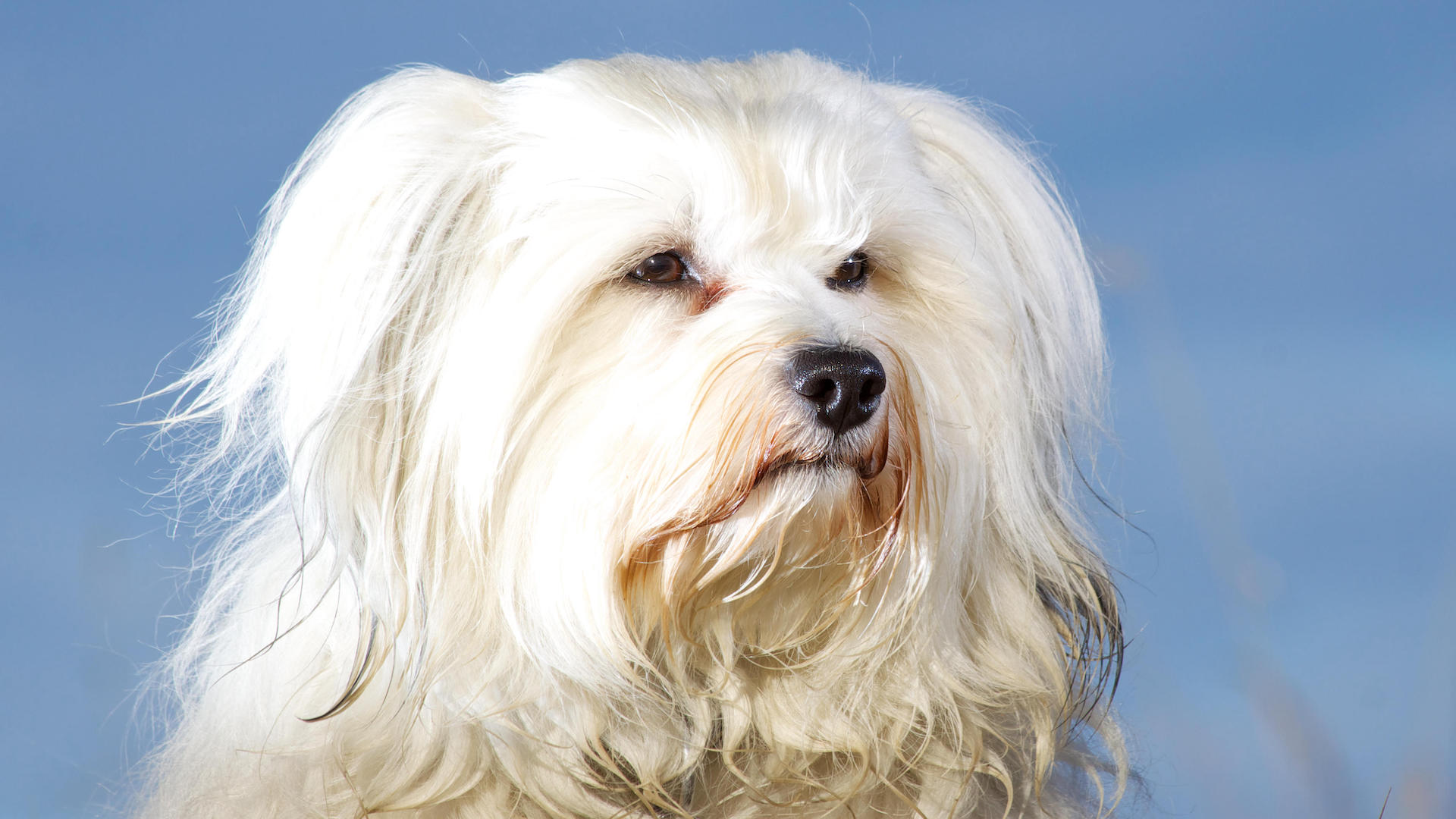
These delightful companion animals do not like to be left alone, as they love to be close to their human family.
23. Pug
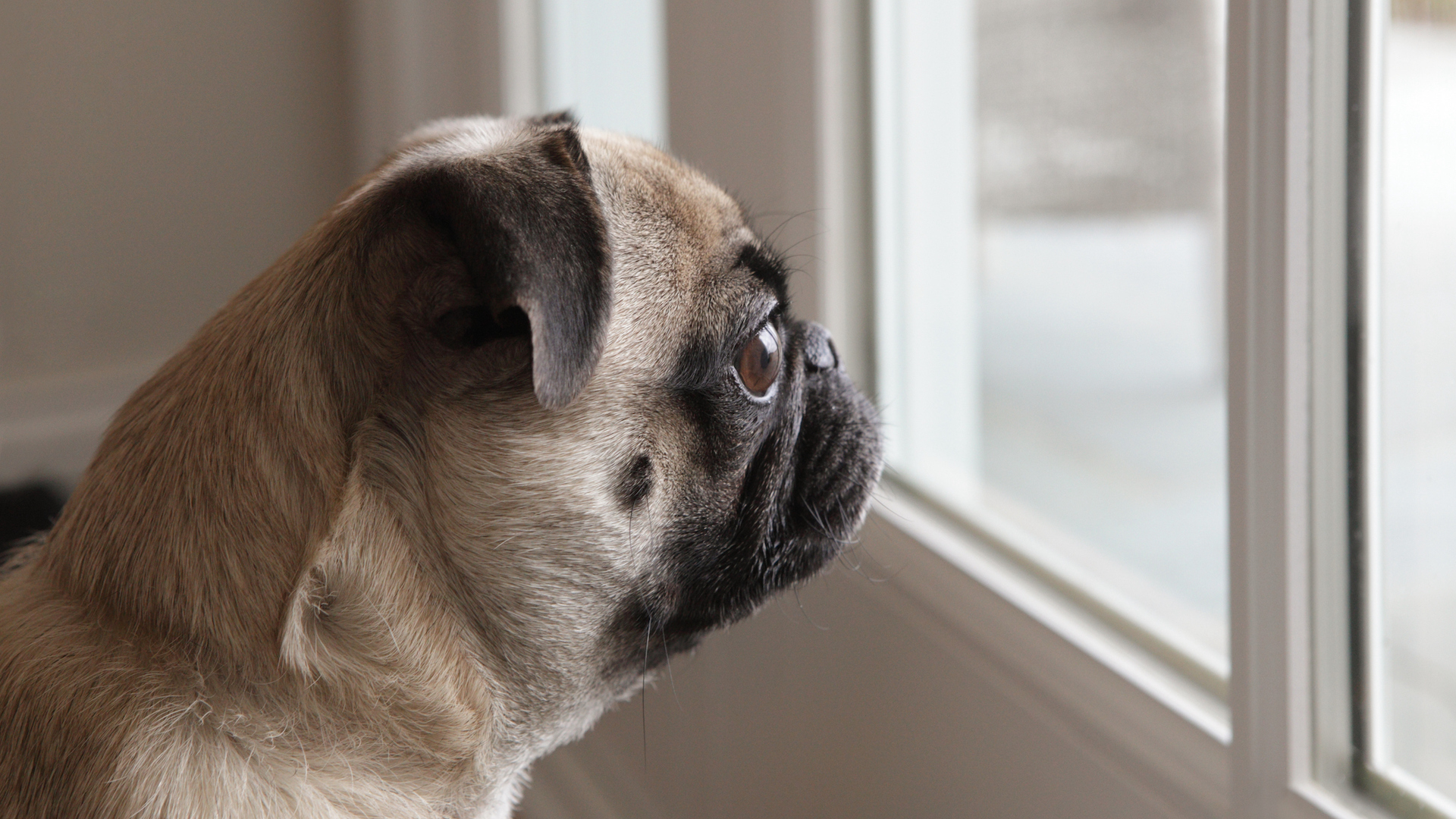
Pugs are celebrated for the bond they form with their humans, but they are equally more likely to suffer separation anxiety when their owners are out if not managed appropriately from a young age. This little dog loves to be your friend, craves attention and time – and if you can’t give it, they aren’t happy.
24. French Bulldog
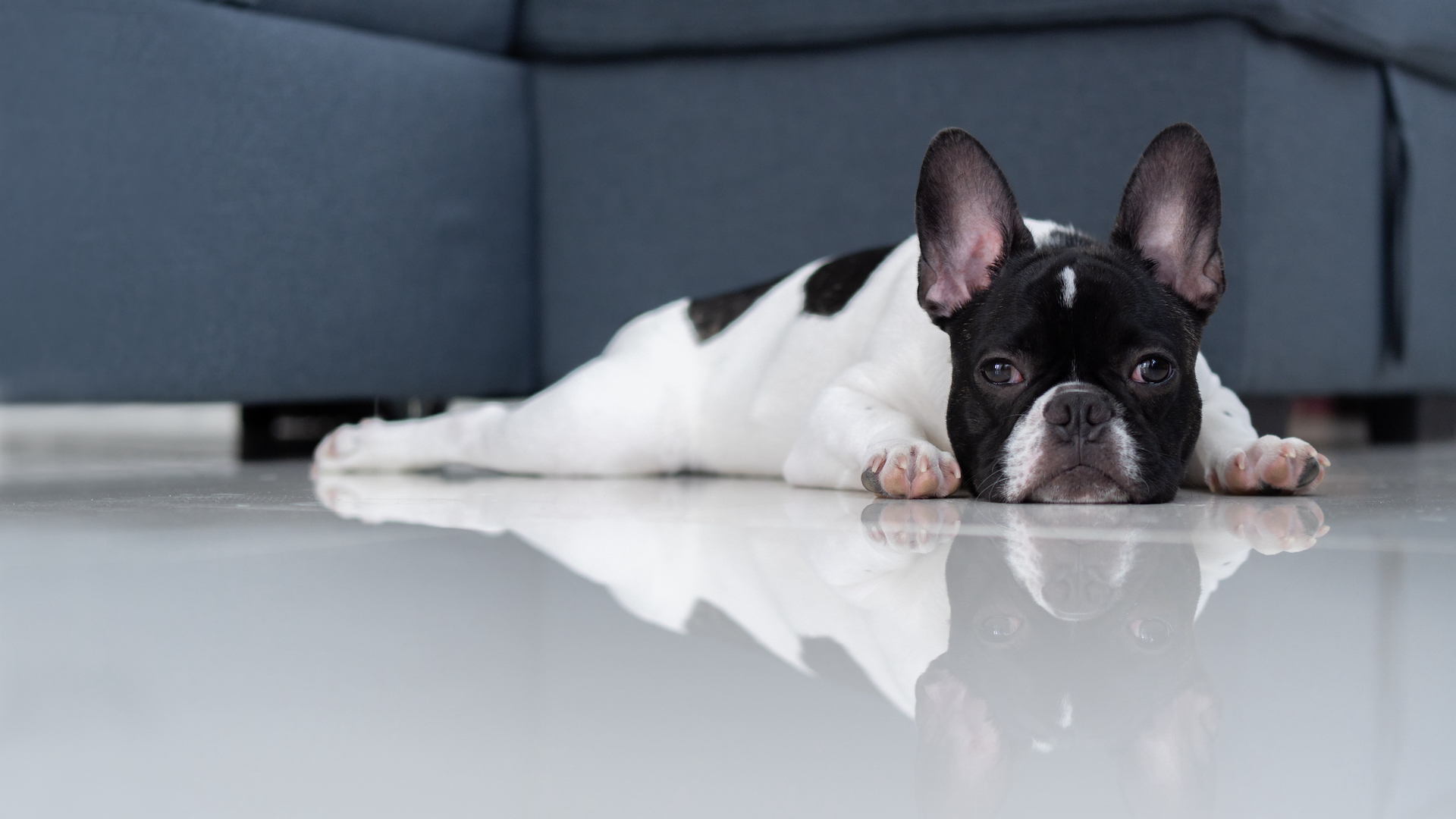
French Bulldogs are so devoted to their owners. They’re so excited for you to return home to greet you with loving kisses – but what happens when you are out? Because Frenchies are such “people-dogs”, it is inevitable that they don’t handle long absences too well.
25. Siberian Husky
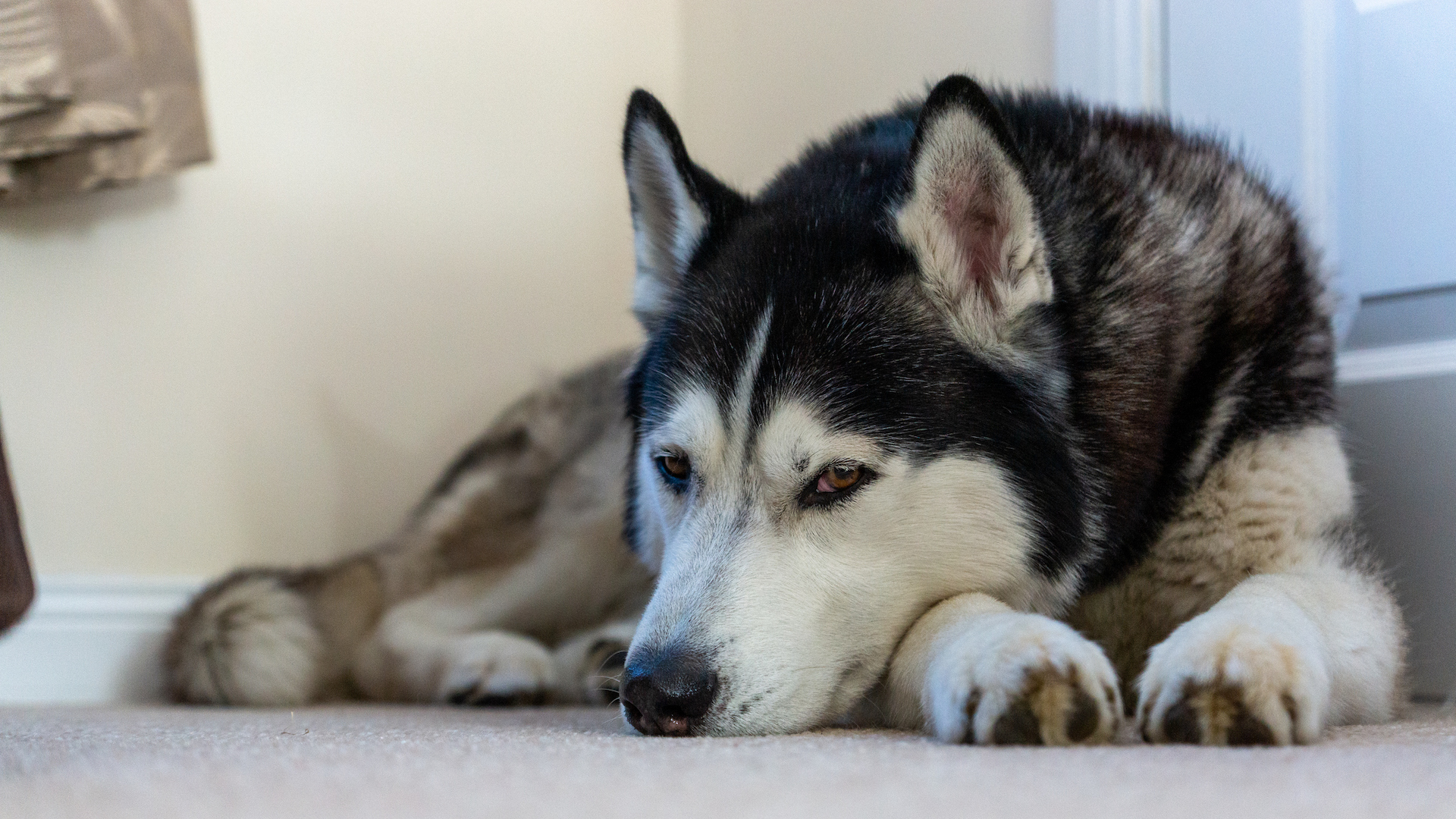
A hardworking dog with very high physical energy demands, the Siberian Husky doesn’t handle being left alone with nothing to do – particularly if their energy needs for the day have not been met. Furthermore, they have been bred as a pack animal, so isolation is hard for them to cope with.
26. Labradoodle
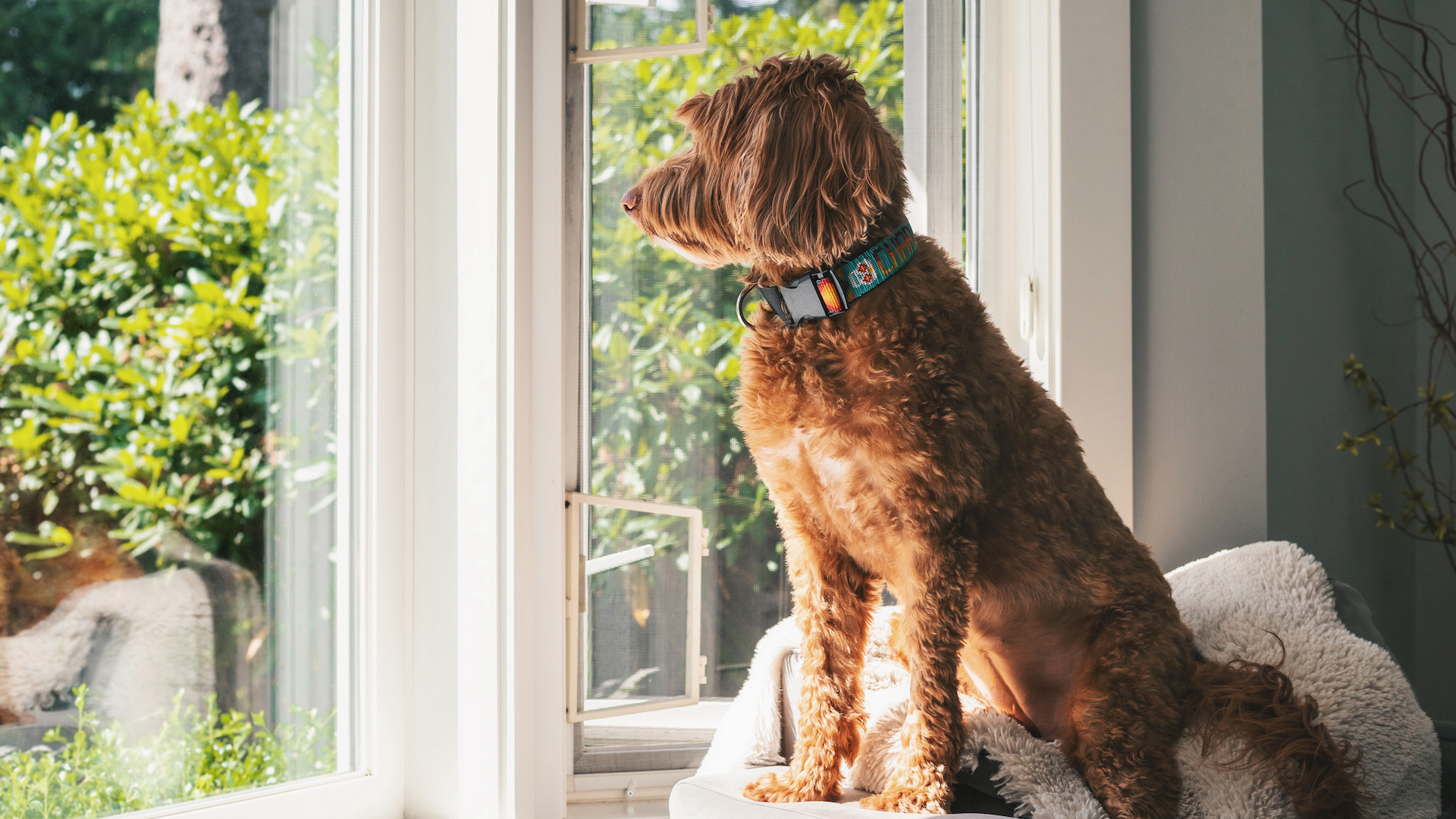
The Labradoodle is a popular cross-breed (Labrador x Poodle) combining two breeds that are highly sociable and form strong bonds with their human families. They tend to require firm early training to avoid destructive behavior and separation anxiety.
27. Yorkshire Terrier
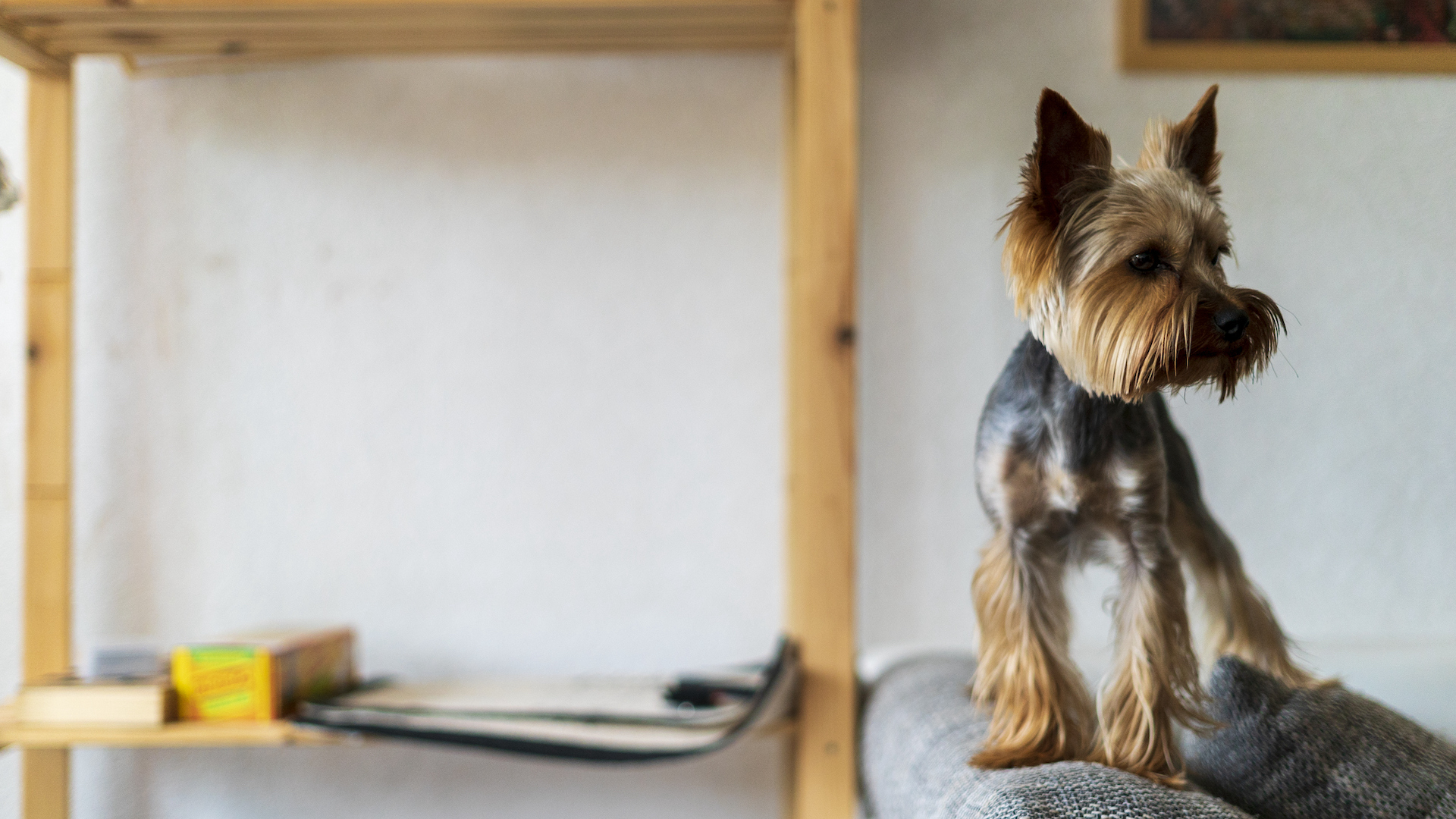
These adorable terriers are known for forming strong attachments with their owners, which means that any separation can cause stress and anxiety. They may look cute, but they’re also fragile, protective and complex characters who require careful management to give them confidence.
28. Miniature Schnauzer
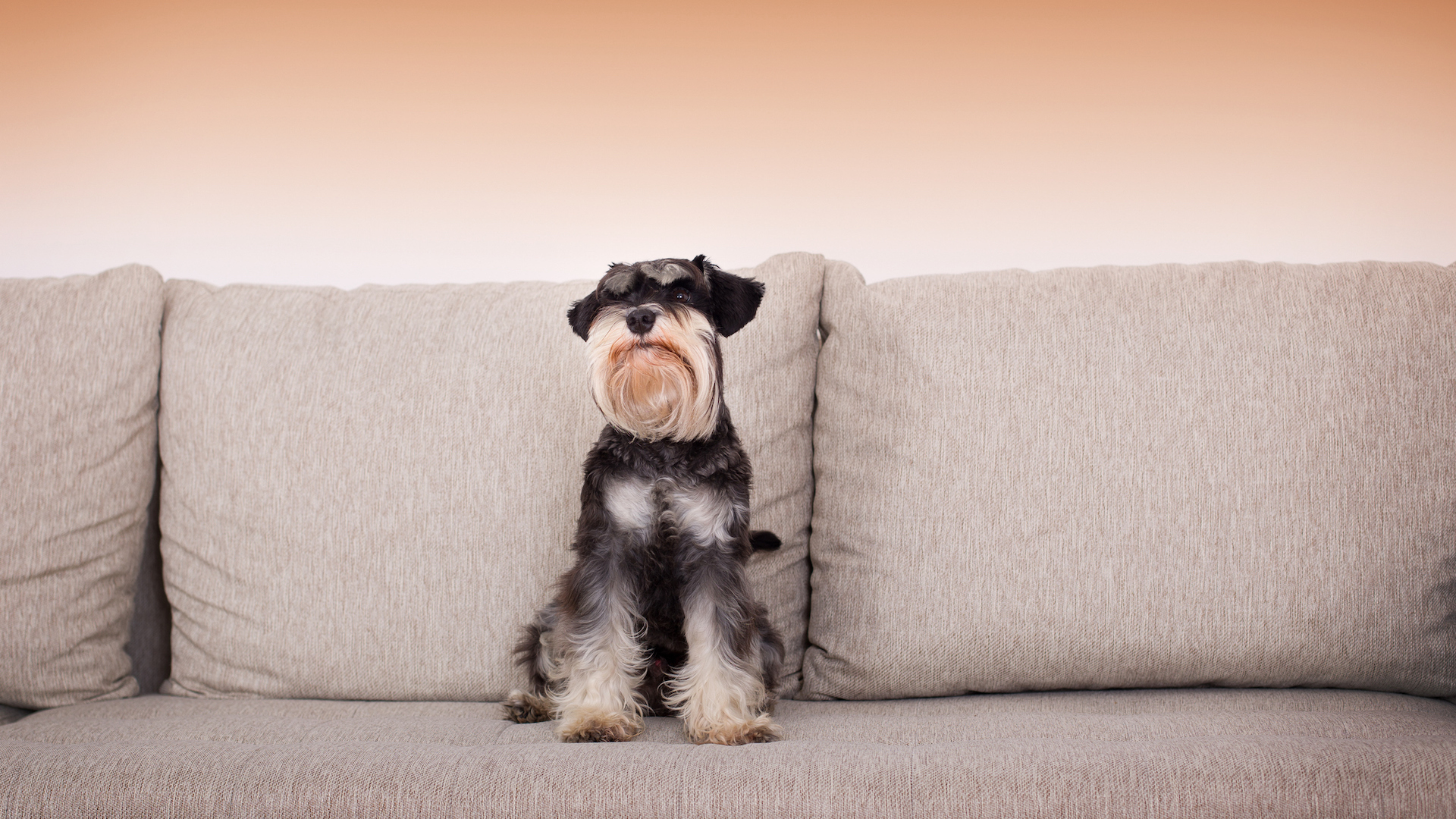
Mini schnauzers thrive on human company and are happiest when they have people around. Their naturally extroverted and intelligent personality can work the other way when they are left alone for long periods without adequate training.
29. German Shorthaired Pointer
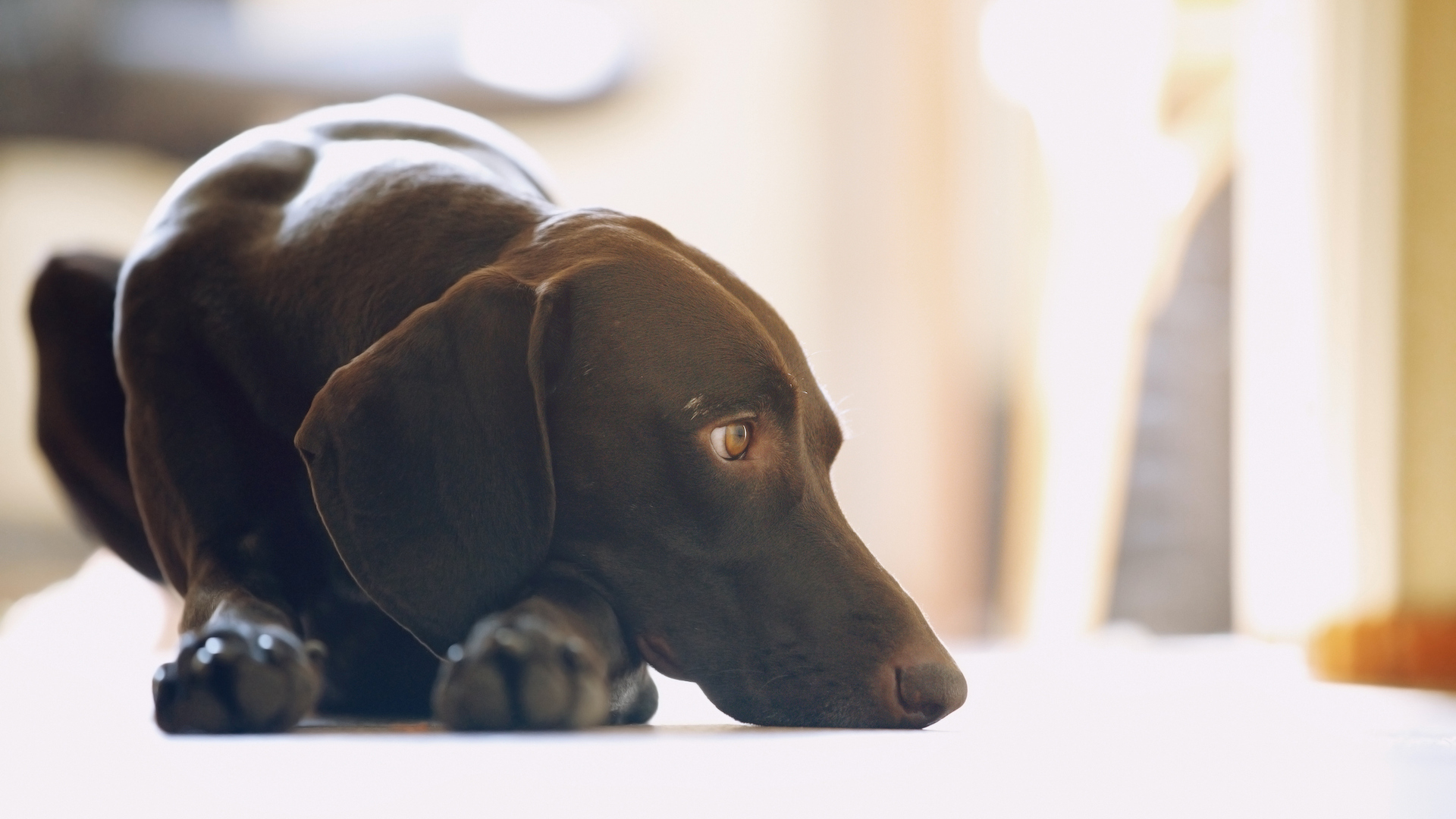
This magnificent breed was bred to hunt alongside humans. They want to work hard, with human at their side. Without plenty of activity, including physical and mental stimulation, they can whine and resort to destructive behaviour out of anxiety.
30. Whippet

Whippets dislike being left by themselves – or anywhere without their owner, with whom they naturally form a strong attachment. Despite the fact that they are quiet and peaceful dogs, they can get stressed very quickly when left alone, and are best kept at a home where someone can be around all day long.
31. Italian Greyhound

Italian Greyhounds are more likely to suffer separation anxiety than their larger cousins, the Greyhound. They are more of a natural companion dog, have a tendency to be clingy and need a great deal of companionship.
32. Pekingese

Separation anxiety is a common behavioral issue in Pekingese dogs, who ideally would have someone around all day long to keep them company. They were bred to be companions, and their naturally loving nature towards their family means they don’t respond well to being left alone for long periods.







